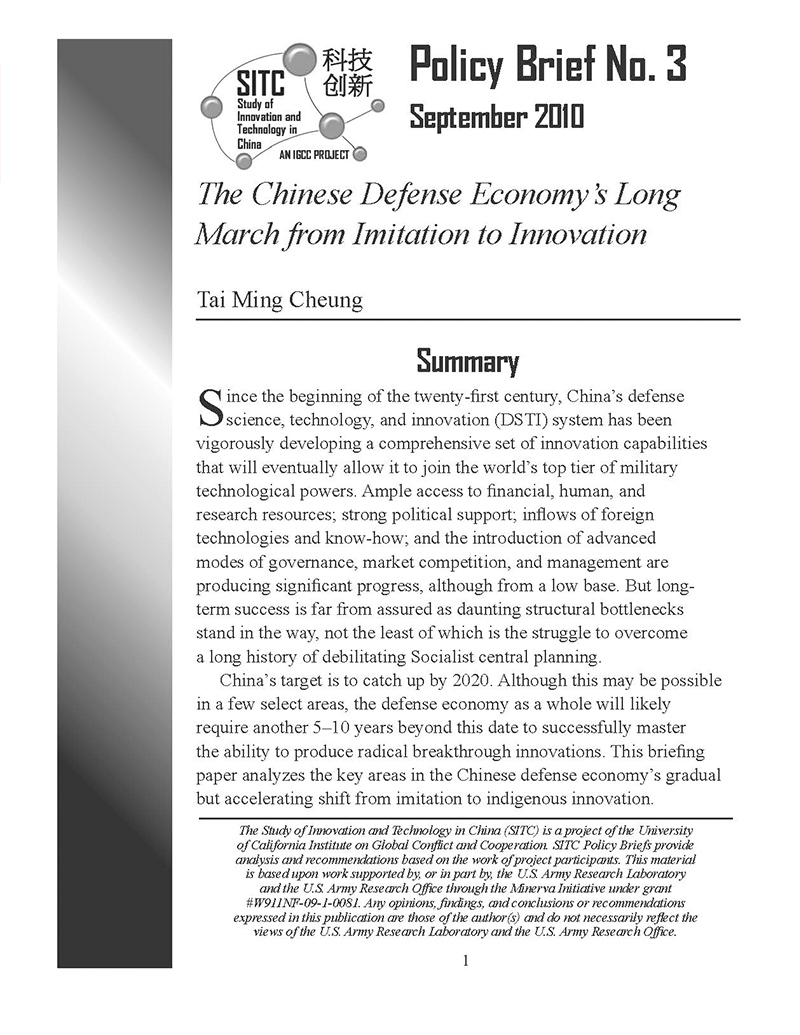The Chinese Defense Economy’s Long March from Imitation to Innovation

This briefing paper analyzes the key areas in the Chinese defense economy’s gradual but accelerating shift from imitation to indigenous innovation.
DownloadSince the beginning of the twenty-first century, China’s defense science, technology, and innovation (DSTI) system has been vigorously developing a comprehensive set of innovation capabilities that will eventually allow it to join the world’s top tier of military technological powers. Ample access to financial, human, and research resources; strong political support; inflows of foreign technologies and know-how; and the introduction of advanced modes of governance, market competition, and management are producing significant progress, although from a low base. But long-term success is far from assured as daunting structural bottlenecks stand in the way, not the least of which is the struggle to overcome a long history of debilitating Socialist central planning.
China’s target is to catch up by 2020. Although this may be possible in a few select areas, the defense economy as a whole will likely require another 5–10 years beyond this date to successfully master the ability to produce radical breakthrough innovations. This briefing paper analyzes the key areas in the Chinese defense economy’s gradual but accelerating shift from imitation to indigenous innovation.